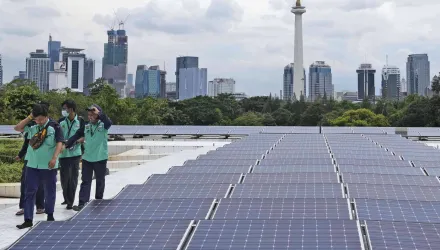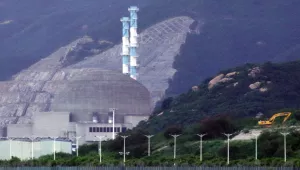
Challenges and Opportunities for Electric Vehicle Adoption
Electric vehicles (EVs) have advanced significantly this decade, owing in part to decreasing battery costs. Yet EVs remain more costly than gasoline fueled vehicles over their useful life. This paper analyzes the additional advances that will be needed, if electric vehicles are to significantly penetrate the passenger vehicle fleet.
Battery Prices
Cell costs have plummeted to $145 per kWh or lower, and are expected to continue falling with technological improvements and returns to large-scale production. While cells are only one component of the cost of an installed battery, the cost of installed batteries has declined from around $1,000 per kWh in 2010 to an estimated $250- 350 per kWh in 2018. Total battery costs are falling more slowly, as consumers demand EVs with longer ranges and thus larger batteries. Meanwhile, governments are finding it increasingly difficult to fiscally justify large subsidies to attract buyers.
Will Declining Battery Costs Make EVs Competitive?
This paper compares the lifetime costs of battery-only cars (BEVs), plug-in hybrids (PHEV) and gasoline-fueled internal combustion-engined vehicles (ICE), using a range of gasoline prices, discount rates, and battery costs. The PHEV is more expensive than the ICE in almost all scenarios, while the BEV is robustly cost-competitive, once installed battery prices reach $200-$250 per kWh. Hence, further reductions in battery costs will still be needed for BEVs to be a viable alternative to ICEs.
The paper compares the lifetime costs of the Chevrolet Bolt BEV to the costs of an equivalent PHEV and ICE, using a range of gasoline prices, discount rates, and battery costs. The PHEV is more expensive than the ICE in almost all scenarios, while the BEV is cost-competitive once battery prices reach $200-$250 per kWh.
Will Charging Infrastructure Support EV Adoption?
Commercial success for EVs will require installing charging infrastructure that is accessible, easy to use, and relatively inexpensive—whether at home or in public locations. The form this infrastructure will take is still uncertain, with a range of charging technologies currently available and more expected to emerge over the next five years. The current range of equipment spans slower alternating current (AC) chargers best suited to home or office locations and short trips (Level 1-2 in this paper), and much faster direct current fast chargers (DCFC) for rapid refueling in public locations, best suited for recharging on longer journeys (Level 3-5). The time taken to add 100 miles of range varies from 26 hours for the slowest AC charger, to six minutes for the fastest DCFC charger—still far slower than the 300 miles-per-minute enjoyed by a 30 mile-per-gallon ICE.
The costs of charging infrastructure are both fixed (installation, utility service, transformers, and equipment) and variable (electricity charges). For chargers on commercial electricity tariffs, demand charges can dominate operating costs. As a result, the total cost of power from fast charging stations is higher than slower residential chargers unless the former can achieve sufficiently high utilization rates.
Modeling different types of charging infrastructure and comparing them with the operating costs of an ICE suggests that simple home charging is competitive with today’s more efficient gasoline cars and could be significantly cheaper if a time-of-use electricity tariff, with lower prices in off-peak periods, is in place. More powerful home charging is sensitive to capital costs, but is competitive with moderately efficient ICEs and substantially cheaper under a time-of-use tariff. For commercial chargers (Level 3-5), the price of electricity required for investment in the system to break even falls sharply at progressively higher utilization rates. At 30% utilization, all variants are cheaper than fueling an average ICE, and at 40% utilization, they are competitive with an efficient ICE.
At current levels of utilization (optimistically, 10%), commercial chargers are almost universally not economically profitable, suggesting a significant, sustained increase in demand will be needed for commercial charging infrastructure to deliver financial returns, and compete with both ICEs and cheaper residential charging.
Managing additional power demand from EVs is both a challenge and an opportunity for distribution utilities. High concentration of EV home charging during peak periods can overload local transformers. Utilities may have to procure additional peak capacity, unless they are able to shift demand to off-peak periods. Time-of-use electricity pricing, along with smart metering, have already been deployed in some states to incentivize off-peak charging and manage peak loads, respectively. It is unclear whether they will be sufficient to offset demand increases. Vehicle-to-grid technology, allowing EVs to serve as mobile electricity storage units, could complement these efforts but will need adequate incentives, which are not presently available. Overall, electricity tariff reforms will be essential, if today’s power systems will be able to serve the additional demand from the significant deployment of electric vehicles.
Lee, Henry and Alex Clark. “Charging the Future.” Environment and Natural Resources Program, Belfer Center, September 2018






